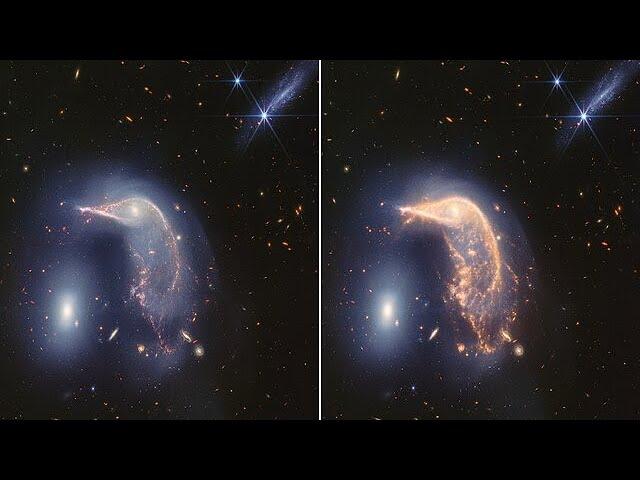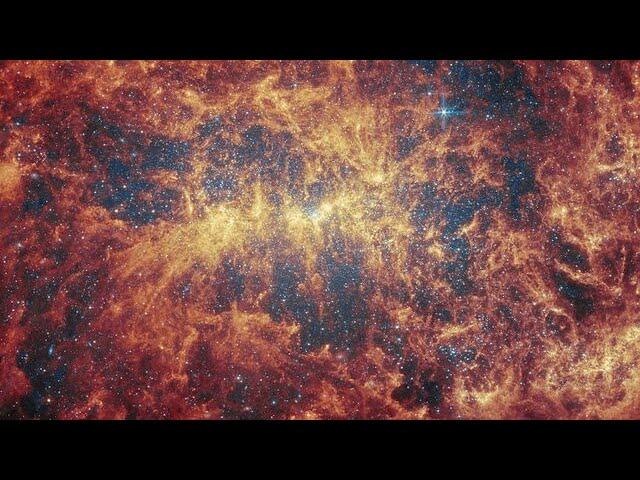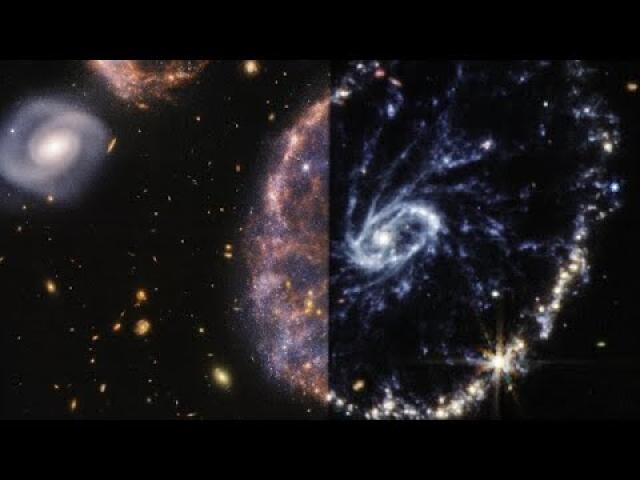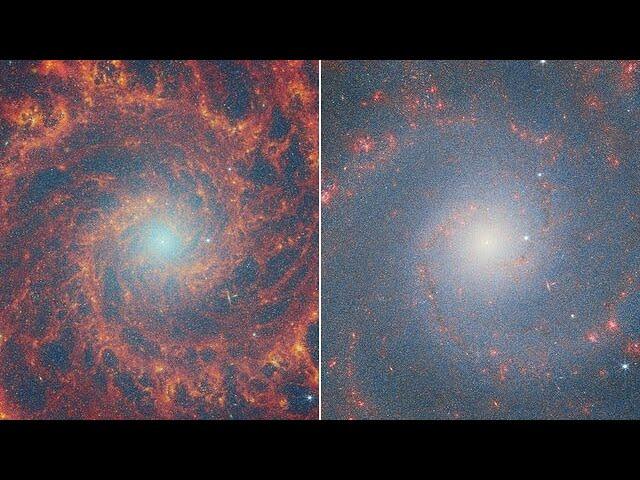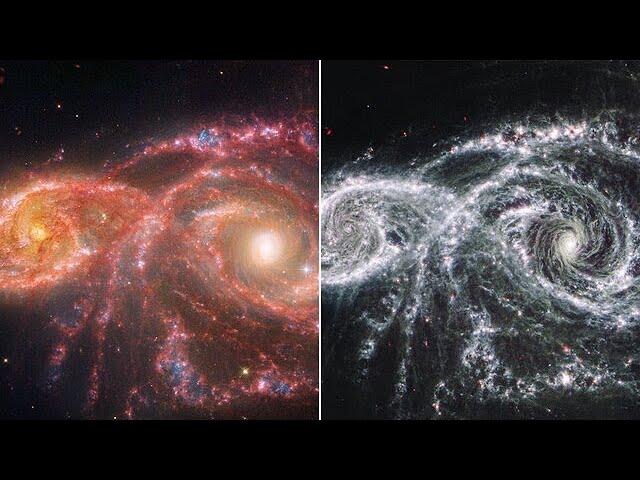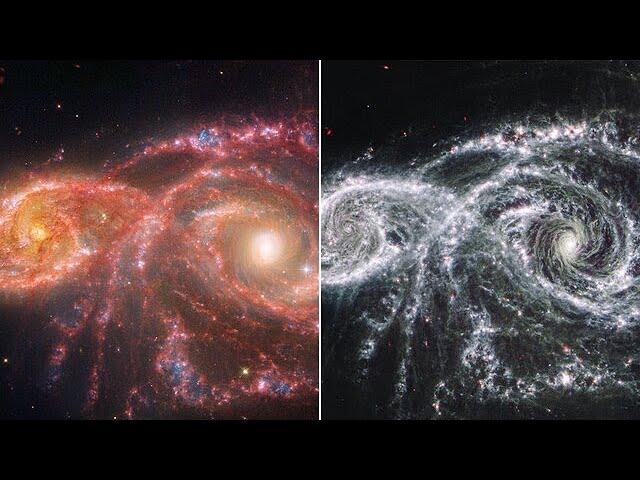Pan of M83 (MIRI image)
Description
The barred spiral galaxy M83 is revealed in detail by the NASA/ESA/CSA James Webb Space Telescope. M83, which is also known as NGC 5236, was observed by Webb as part of a series of observations collectively titled Feedback in Emerging extrAgalactic Star clusTers, or FEAST. Another target of the FEAST observations, M51, was the subject of a previous Webb Picture of the Month.
MIRI, or the Mid-InfraRed Instrument, makes observations in the mid-infrared, which spans wavelengths of light very different from optical wavelengths. Optical wavelengths in astronomy roughly correspond to the range of light waves that human eyes are sensitive to, and extend from about 0.38 to 0.75 micrometres (a micrometre, or micron, is one thousandth of a millimetre). By contrast, MIRI detects light from 5 to 28 micrometres — however, when it makes observations, it does not typically observe across this entire wavelength range all at once. Instead, MIRI has a set of ten filters that allow very specific regions of light through. For example, one of MIRI’s filters (dubbed F770W), allows light with wavelengths of 6.581 to 8.687 micrometres to pass through it.
This image was compiled using data collected through just two of MIRI’s ten filters, near the short end of the instrument’s wavelength range. The result is this extraordinarily detailed image, with its creeping tendrils of gas, dust and stars. In this image, the bright blue shows the distribution of stars across the central part of the galaxy. The bright yellow regions that weave through the spiral arms indicate concentrations of active stellar nurseries, where new stars are forming. The orange-red areas indicate the distribution of a type of carbon-based compound known as polycyclic aromatic hydrocarbons (or PAHs) — the F770W filter, one of the two used here, is particularly suited to imaging these important molecules.
More information and download options: http://esawebb.org/videos/potm2310a/
Credit:
ESA/Webb, NASA & CSA, A. Adamo (Stockholm University) and the FEAST JWST team, N. Bartmann (ESA/Webb)
Music: Stellardrone - Twilight


